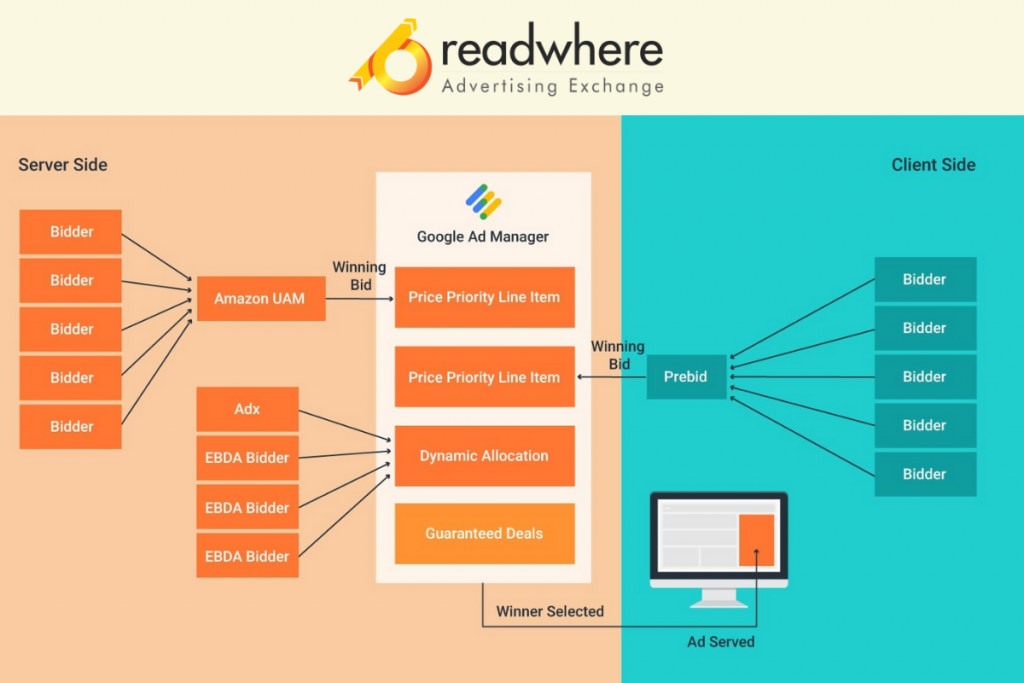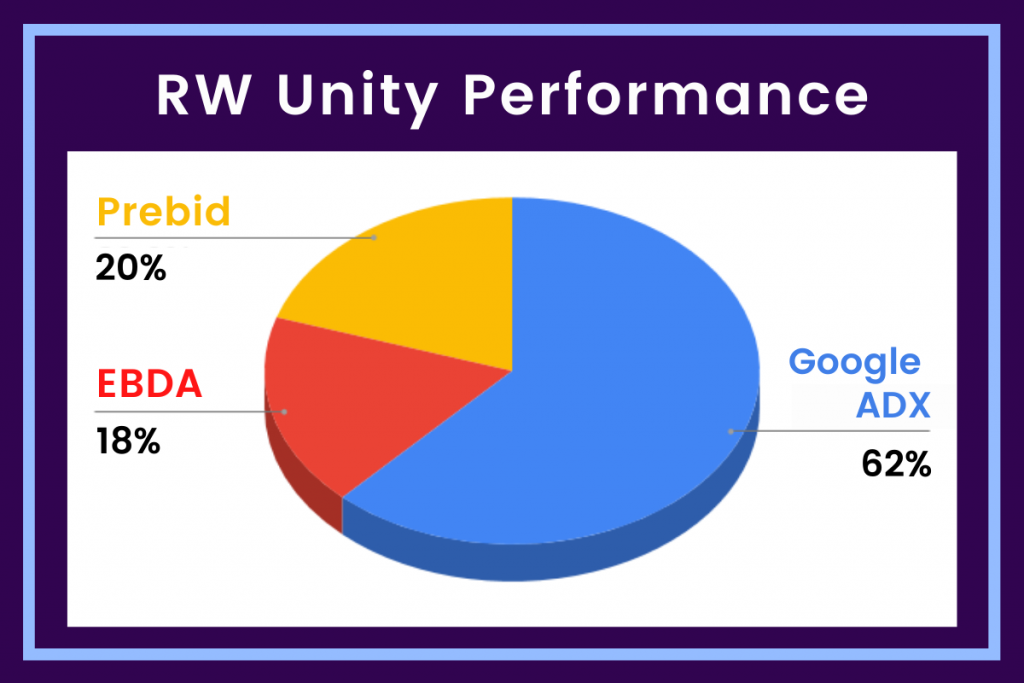Publishers usually make the most of Exchange Bidding Dynamic Allocation(EBDA) or Header Bidding programmatic techniques for offering their inventory to ad exchanges. Both these techniques have their own benefits and drawbacks considering the needs and demands of the publishers. Understand everything about EBDA in our previous article.
In this article, let us learn about something more interesting that would benefit the publishers as their Ad Exchange partner to get the best for their inventory. Let us learn about Readwhere Unity- a platform built by Readwhere to help publishers with inventory space.
Dig in!
RW Unity- Single Unified Platform Competing Prebid, EBDA and Amazon UAM
This platform does not only assist publishers in completing real-time demand partners for inventory space but also brings up multiple setups for three different layers of demand auction in the simplest way.
RW Unity can work as a preferred choice for publishers as it brings the best of both worlds. Want to know how?
Understand how RW Unity works in the simplest way.

It is a single unified platform competing with prebid and EBDA.
As shown in the diagram, server side bids as well as client side bids are included and compared.
In this process, the server-side bidders come to Amazon UAM and client-side demand partners come to the Prebid and the bids are compared.
The winning bid is selected from both and sent to the Google Ad Manager with four line items running.
The top two line item viz. ‘Price Priority Line Item’ calls for the winning bid from Amazon UAM which is further compared to the winning bid submitted by Prebid.
These two are further compared to the third section where EBDA demand partners are bidding for the Dynamic Allocation space.
We can see that three different layers of the auction are taking place for a single inventory.
The best winning bid from all the three is selected and gets the ad space.
However, there is one more layer which includes a guaranteed deal. If the winning bids aren’t higher than the guaranteed deal, they will not be displayed. Along with this, if it is a sponsorship line item, it gets higher priority as compared to the winning bid and finally, the ad is served.
Here are some of the important terms related to the working of RW Unity that makes it beneficial for publishers.
- Ad Refreshment and Lazy Loading
- Optimised Site Mapping
- Fully Customisable settings and controlled platform
- Auto Supply Side Platform Tag Generation
- Instant size modification
- Unified Reporting
Benefits of RW Unity
This three layered platform using Amazon Unified Ad Marketplace (UAM), Prebid and EBDA can be stated as a beneficial one as the whole revenue generated is not just from Google alone. It serves the purpose of creating more demand and better competition. Here are some benefits of RW Unity.
- Average of 37% Uplift in eCPM with Unified Auction
- Transparent & Tech Agnostic for a user-friendly experience
- Timeout Management not more than 200 milliseconds i.e. the standard time for real-time bids to take place.
- Health Checking which is basically auto health check to determine if tags are broken.
- Tag Regeneration for the purpose of repairing and damage control
- Unified Bidding for calling multiple demand partners to bid at the same time.
- Simple Reporting for everyone to understand quickly
- Lean and Fast experience for end-to-end benefits

What makes RW Unity platform special?
- RW Unity works to deliver a soothing experience while displaying the ad without affecting the user experience.
- The ads will appear when the user scrolls through the site i.e. whenever there is a user action. The ads displayed to the users are AI ML Dynamic Ads.
- It is an Open Source Technology to run Unbiased Unified Auctions.
- There are various tools to manage and optimise partners, inventory and auctions like Rubicon, Index Exchange, Open exchange etc.
- Complete control, safety and Transparency in terms of winning bids, ad requests and so on


